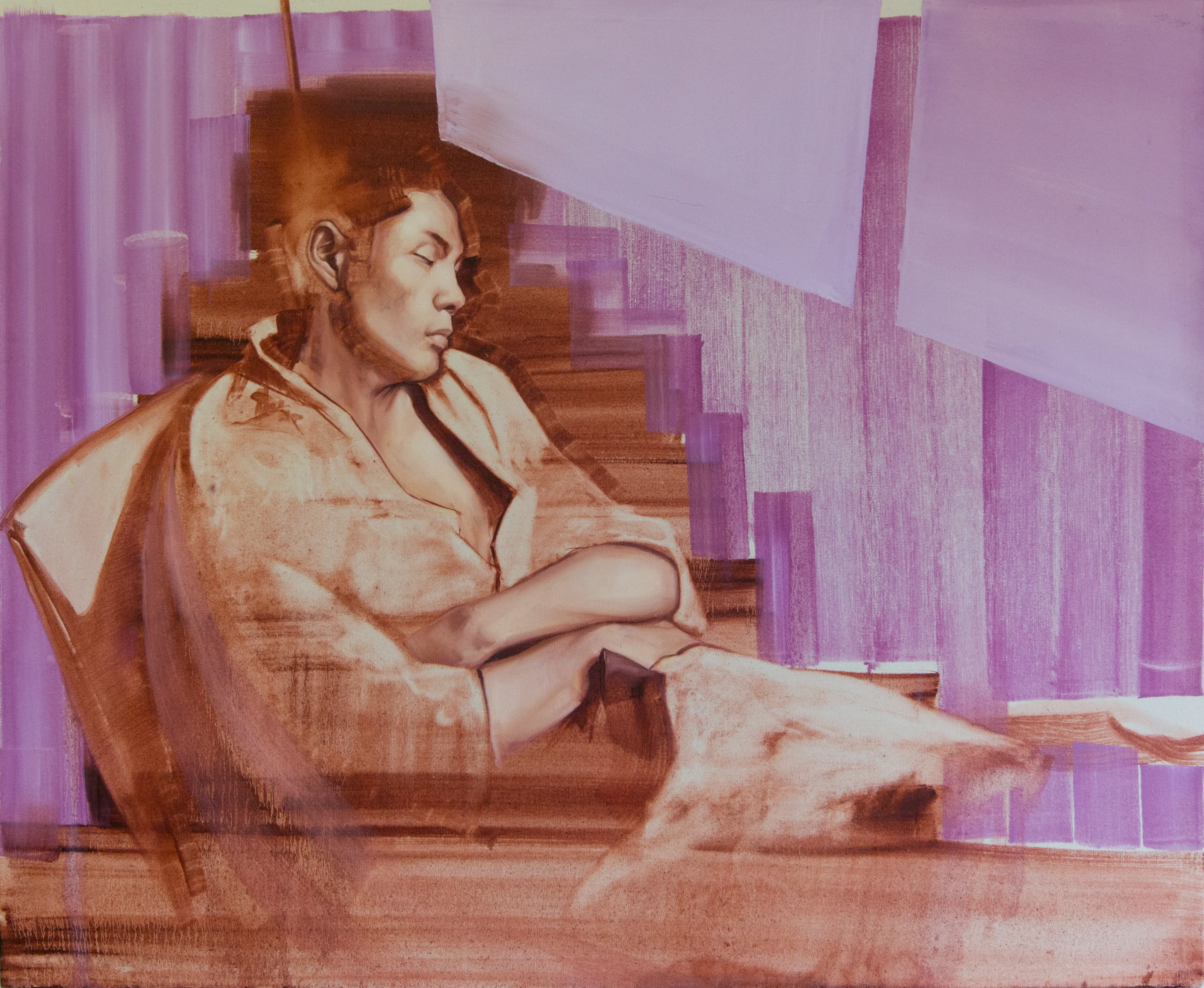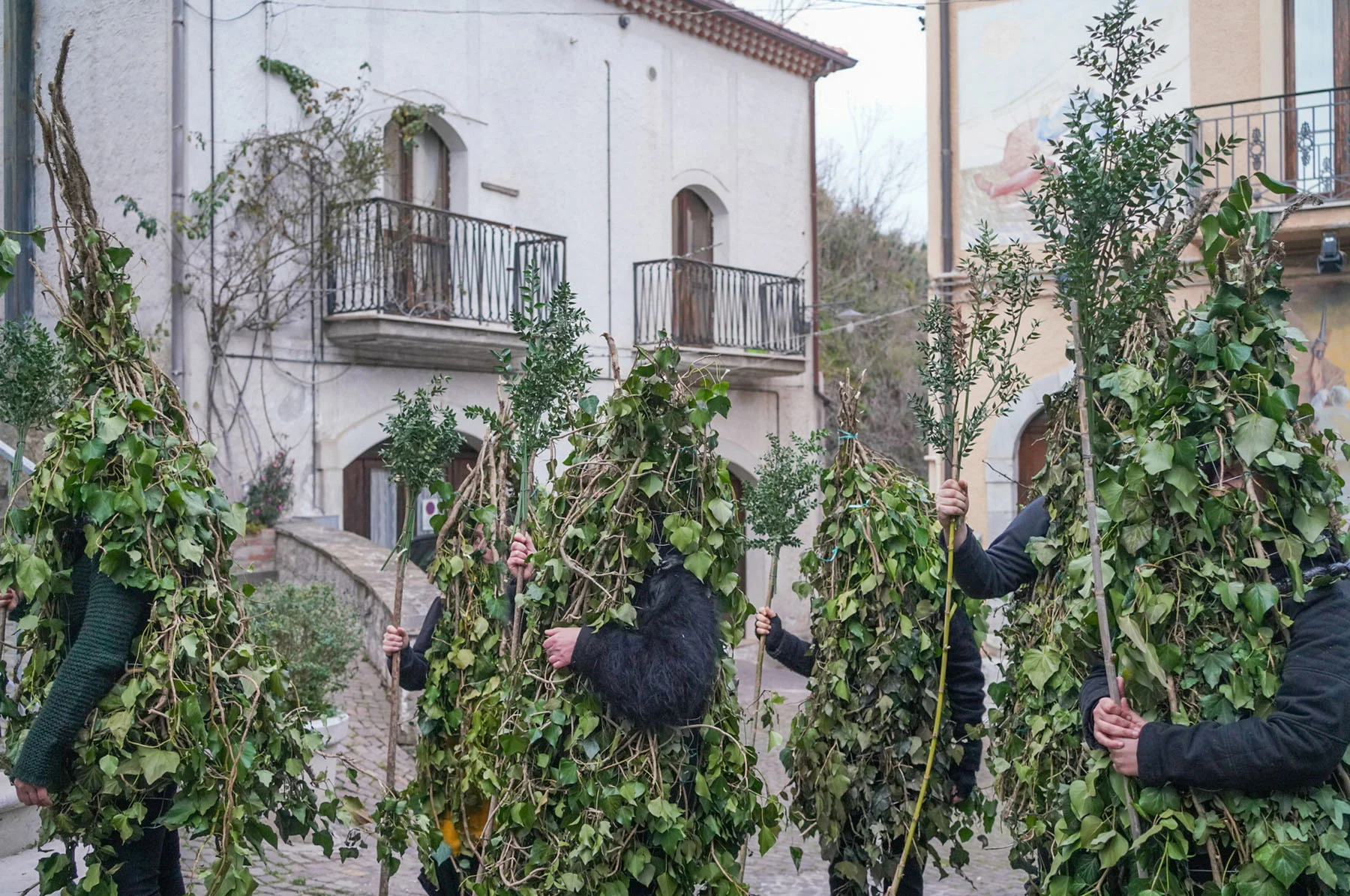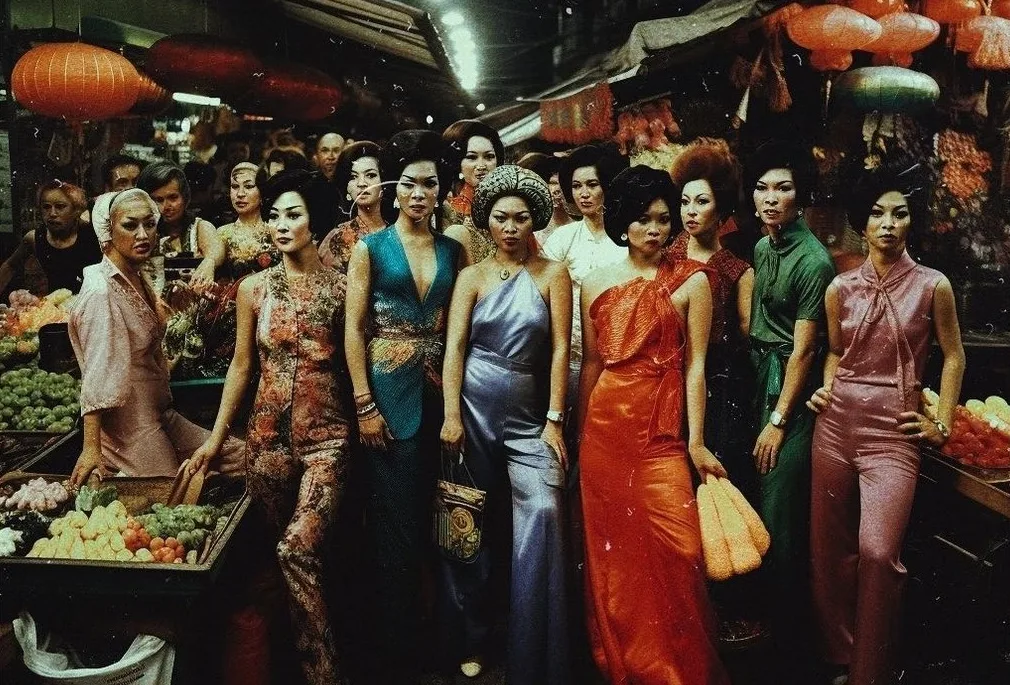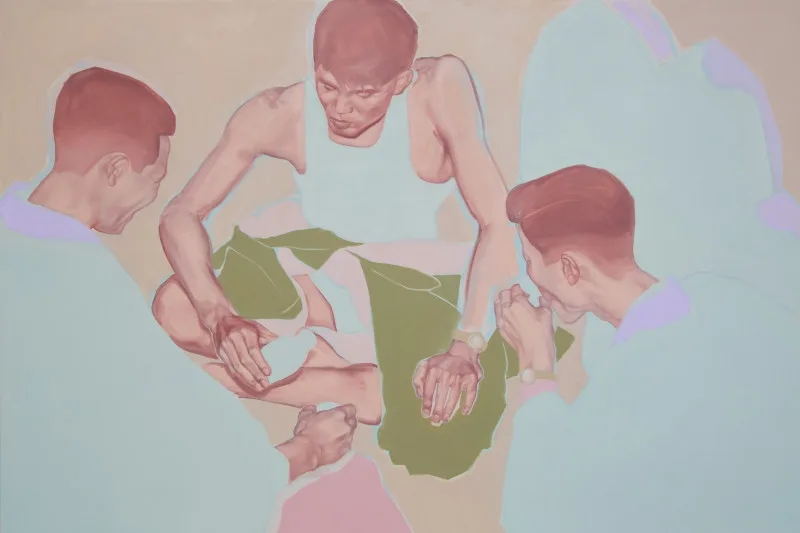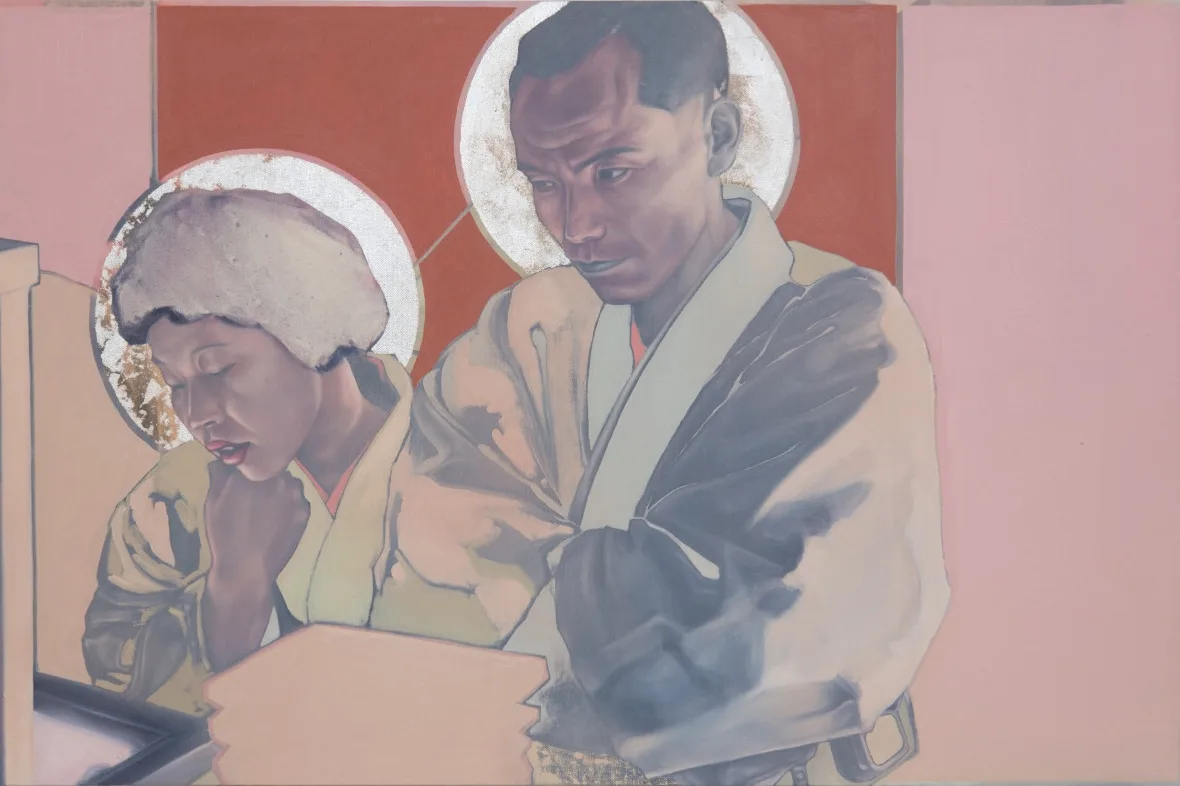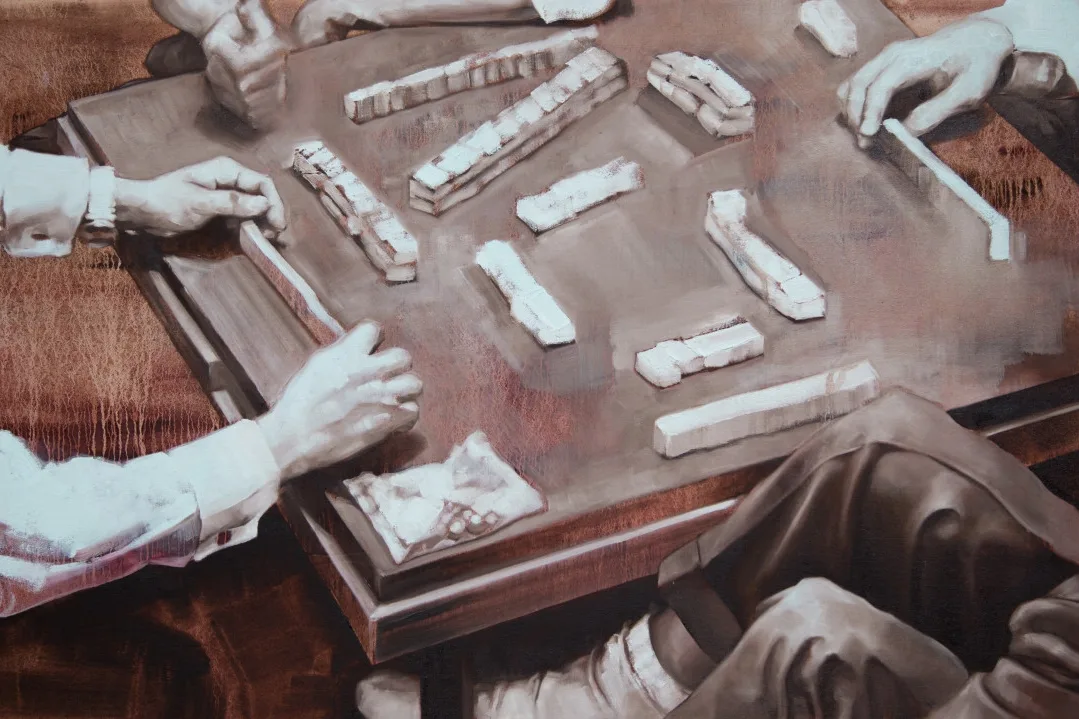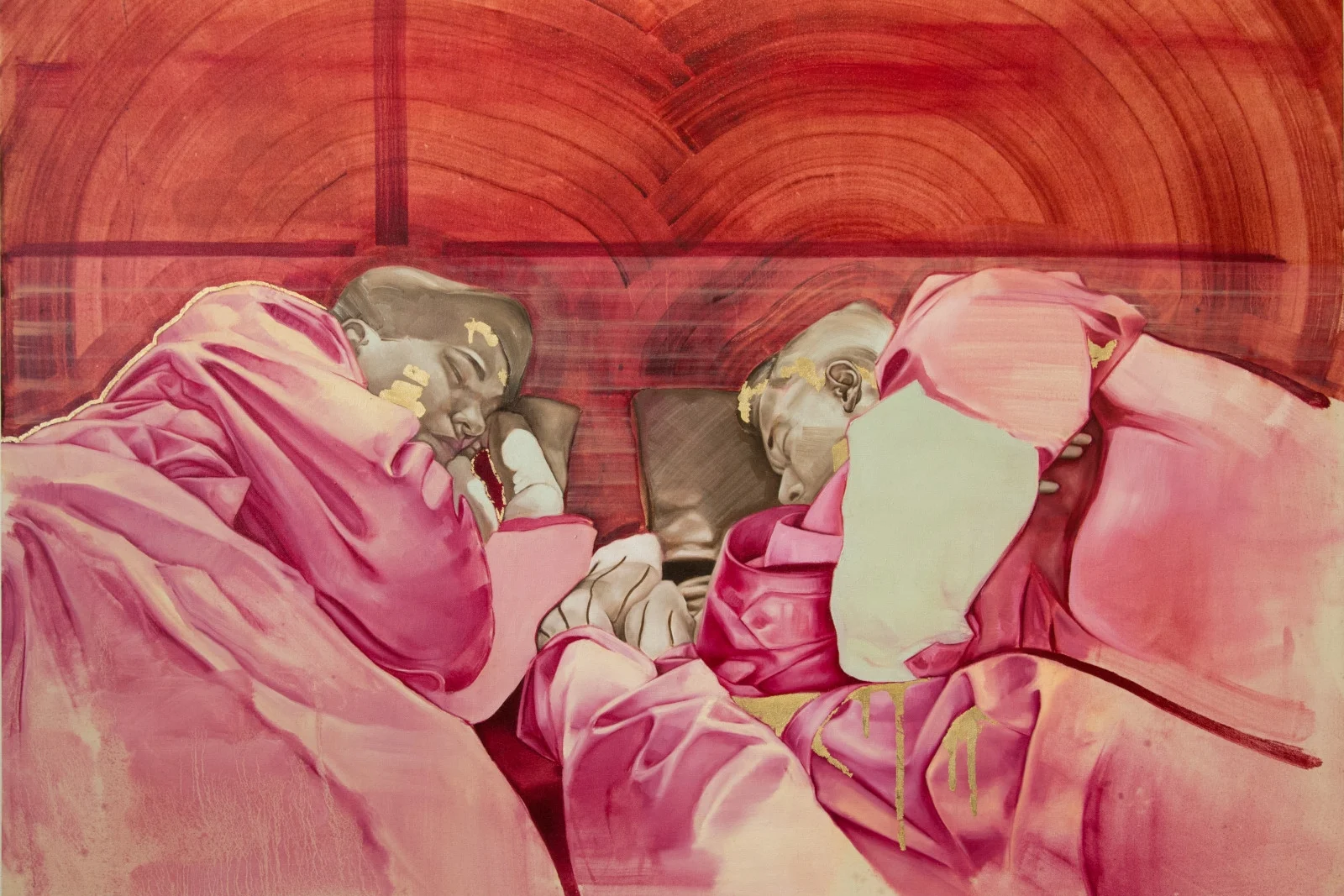
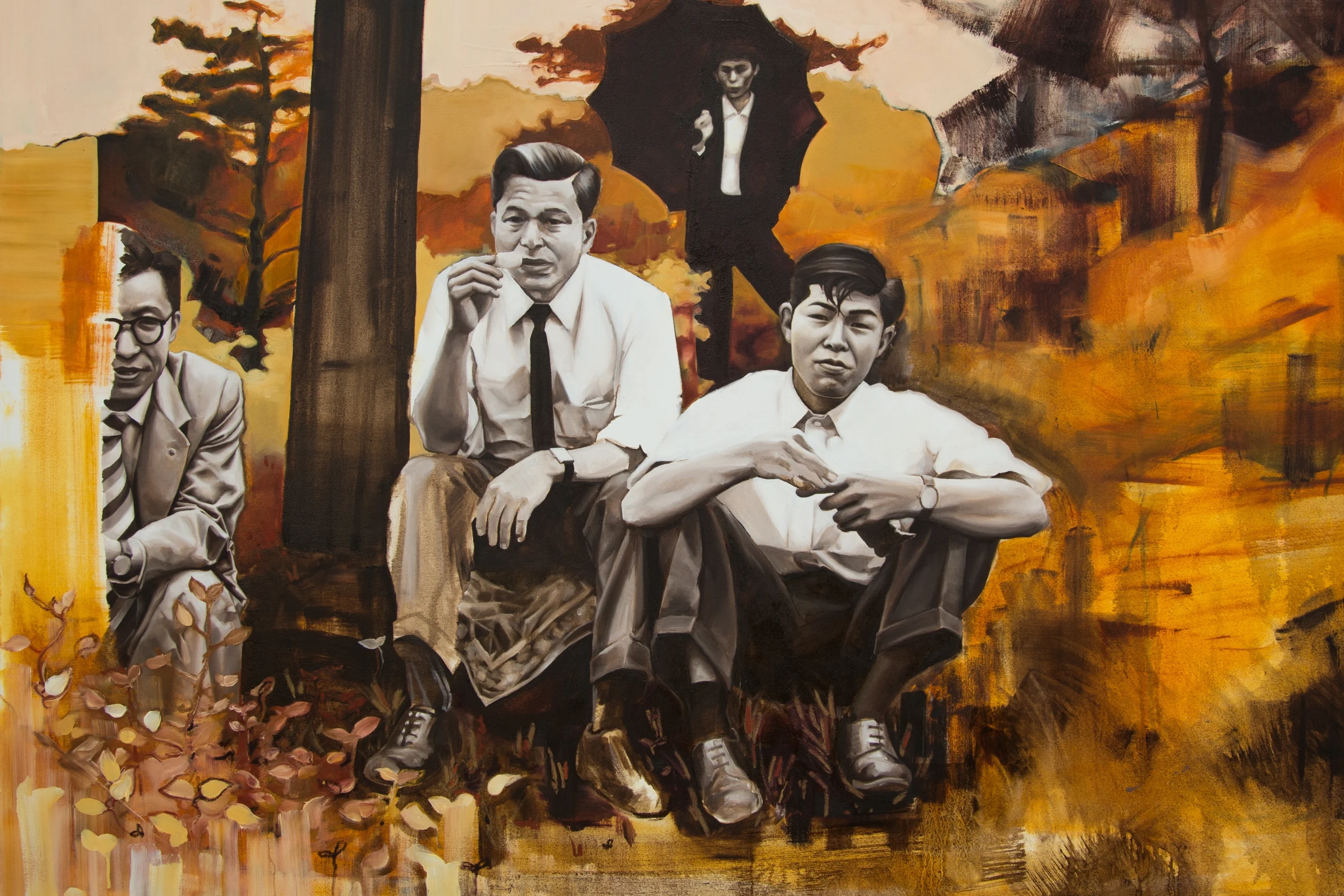
Many artists paint from photographs but not many use pictures taken by one of their family members. Figurative painter Shane Berkery uses candid snapshots that his grandfather took of everyday life in 1950s and 60s Japan.
At the time the country was going through visible postwar westernisation and the photos capture a cultural and aesthetic clash between old and new Japan, especially in the way that people are dressed. As the product of both Japanese and Irish heritage, Dublin-based Shane is familiar with the spaces where Eastern and Western cultures meet.
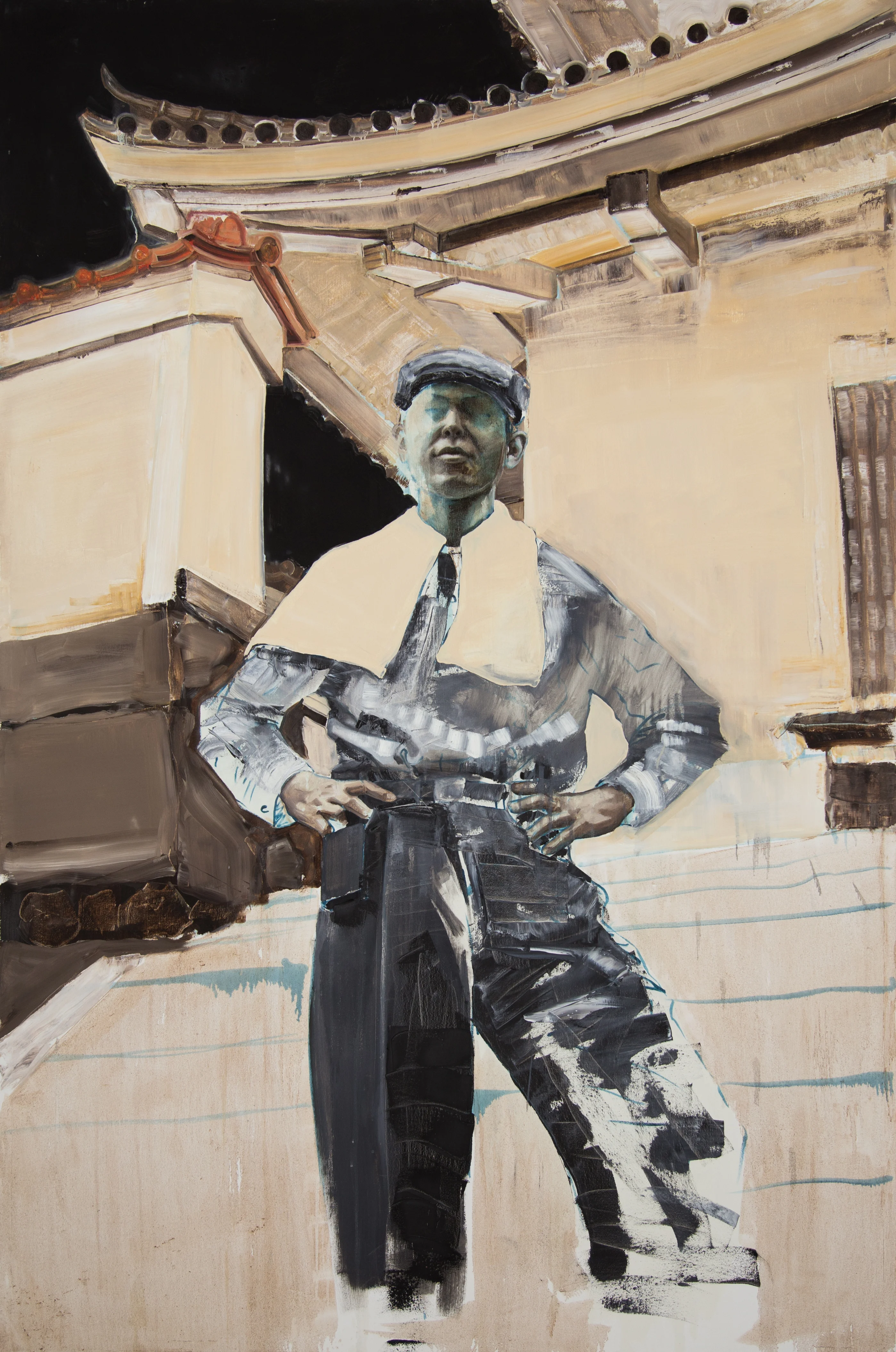
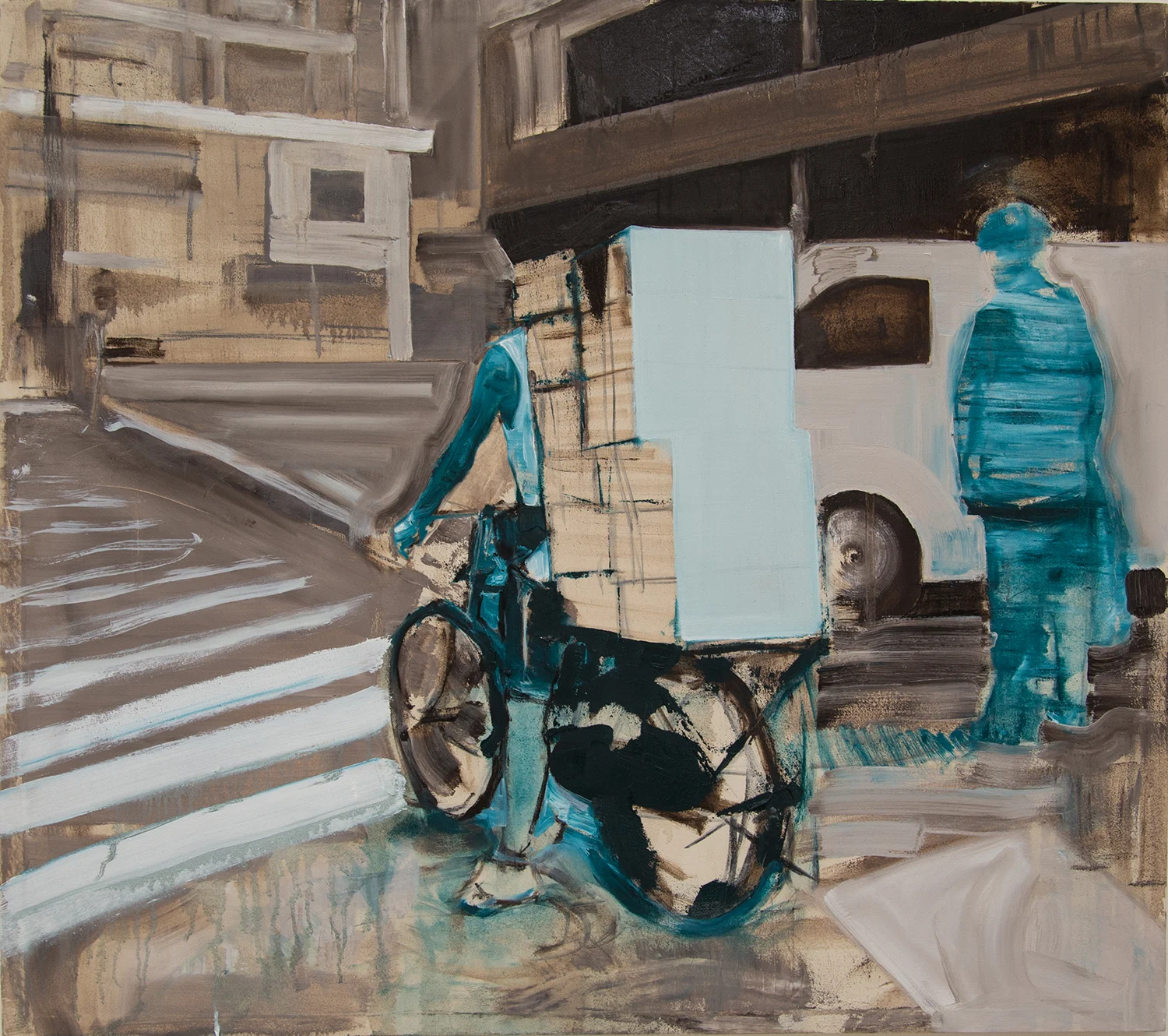
Shane was born in Tokyo, lived in Ohio and Virginia in the States until he was seven, when his family moved back to Japan, and then relocated to Ireland when he was 14.
Looking back over those two major transitions, he says, “In both cases the cultural shift was huge – everything from language and mannerisms to societal structure/expectations were just completely different, and I distinctly didn’t want to be ‘foreign’.”
When Shane chooses a photograph to paint from — he paints from his own photographs too — he looks for an image in which you can feel the presence and weight of the subject.
While his work is concerned with the human figure, interestingly he’ll often paint faces with broader, less defined brushstrokes and render a detail like fabric and clothing so meticulously it’s like you can reach out and touch it.

While he’s happy to stay put in Dublin for now, Shane’s upbringing and what he describes as his “insider/outsider duality” could be credited for his keen observation of the human form and emotion reflected in his paintings.
“I feel that living in and seeing through such completely different cultures has broadened my perspective one way or another. I like to think it has made me more open-minded, maybe.”
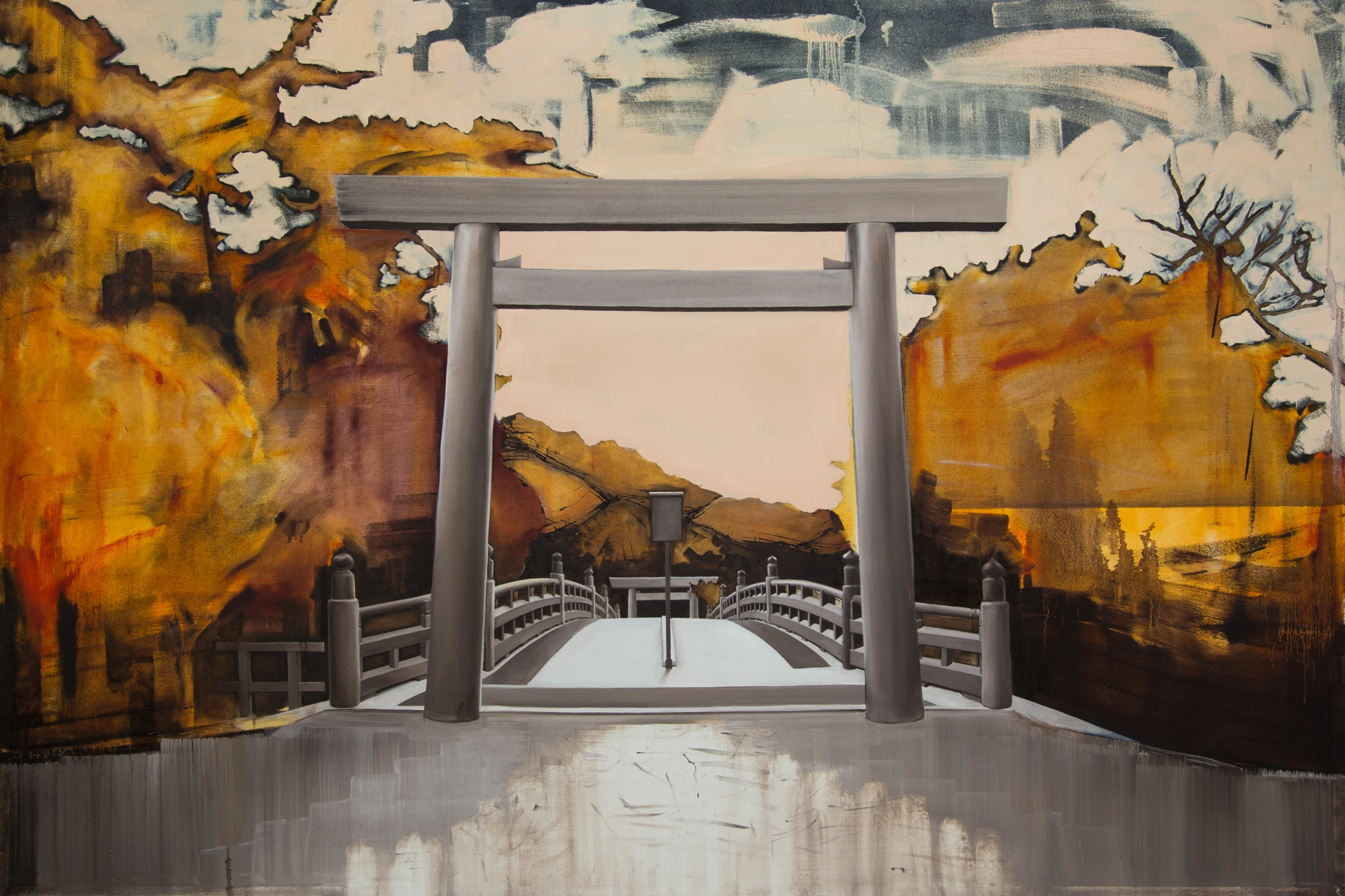

It’s similar to how a photographer would pull focus on a specific area of the frame. “I think fabric offers an opportunity in the image to give the figure a real sense of physicality,” he says.
“I view it as a visual device in creating the sensation of presence. A face can be too specific and personal, and leave no space for the imagination to roam.”
The "unfinished" faces also have another function, to conjure the sensation of trying to remember a dream, when the memory is deeper than what you can access consciously.
Shane says, “I want the viewer to viscerally feel that the figure is real, like in dreams and memories where the details fade but recognition is there nonetheless.”
Backgrounds are also left abstract in his works, or painted in a wash of color. It’s usually his intuition that guides him as to when a painting is ready to leave the studio; other times he declares it done when he’s exhausted by working on it for too long.
I want the viewer to viscerally feel that the figure is real, like in dreams and memories where the details fade but recognition is there nonetheless.
Shane, who graduated from the National College of Art and Design in Dublin, is constantly pushing his practice onwards by learning new skills. He’ll shape an entire painting around a particular texture or technique he wants to try.
An area he is constantly working on is color. When painting from black and white photographs, he can be experimental, pushing the boundaries of what’s real with bright pinks and turquoise.
"Color is one of the visual languages that I feel compelled to become fluent in," he says, "so each painting is an experiment in color combination. I think the moods and sensations that certain combinations create don’t translate well into words.”
